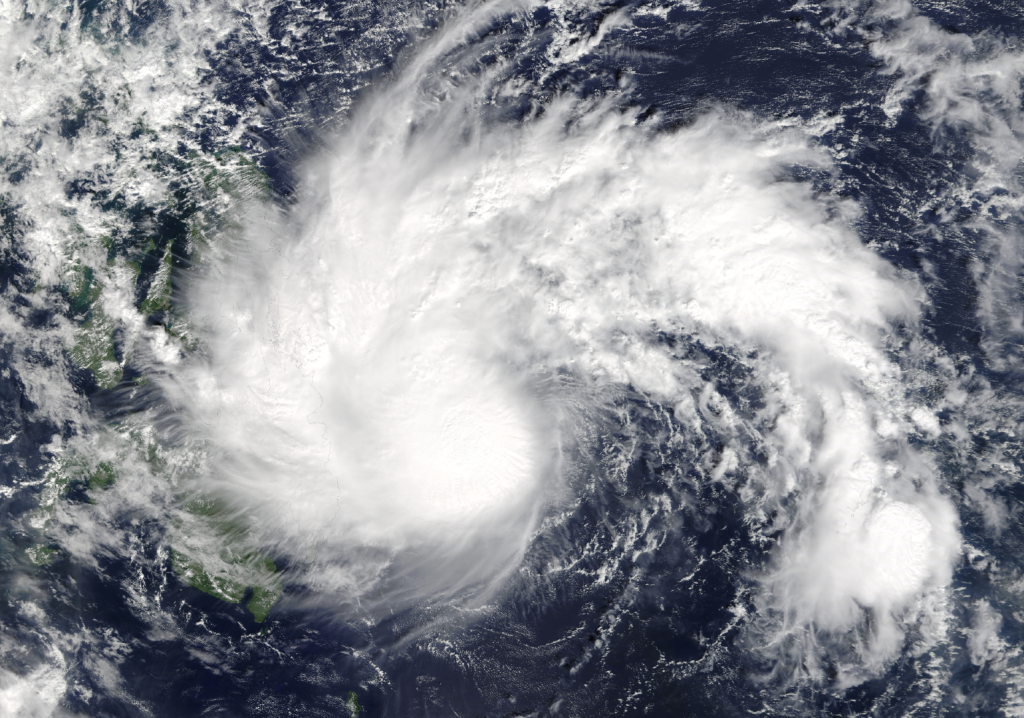With climate change increasing the destructiveness of geo-disasters, this new technology can foreshadow the impacts – and help engineers to plan ahead.
Geo-disasters are catastrophic events that pose significant threats to human life and infrastructure. Mudslides, landslides and other debris flows – often following storms, floods, drought or deforestation – are responsible for hundreds of deaths every year.
Take tropical storm Tembin, for example, which swept through the Philippines in 2017.
A mudslide triggered by Tembin’s heavy rains buried an entire village of 1500 people – with local authorities blaming deforestation of nearby mountainsides for the disaster.
On the home front, the after-effects of the 2018 Newcrest Cadia gold mine tailings dam collapse are still being felt. Dust events from dried tailings have become common for the Cadia and Errowanbang valley communities, posing significant cancer and respiratory complication risks.
But as climate change increases the frequency and severity of extreme weather events such as heavy rainfall, droughts and forest fires, geo-disasters are likely to become more common – and cataclysmic.
While preventing these disasters from occurring is practically impossible, preparing for worst-case scenarios can minimise the impacts. One approach is using advanced computational software capable of predicting both the initial triggers and the subsequent responses of geomaterials and geo-structures.
This is what Associate Professor Ha Hong Bui, an Australian Research Council Future Fellow, is hoping to achieve with the cutting-edge software solution GeoXPM.
Developed by a team of Monash University civil engineers, the software can help engineers analyse different worst-case scenarios to assess the potential impact of geo-disasters on infrastructure and the environment.
“GeoXPM is the culmination of 15 years of research and development efforts, which involved collaborating with domestic and international researchers,” Bui told create.
“This journey began with my PhD research, where I pioneered a novel research direction aimed at creating advanced computing solutions capable of predicting the initiation and aftermath of failures involving geomaterials and geo-structures at engineering scales.”
How it works
GeoXPM is the first fully functional continuum particle-based software to model and predict the onset and post-failure responses of geomaterials and geo-structures as they undergo significant deformations across several scales.
“For example it can be used to evaluate the potential risk of an earth structure failure when exposed to earthquake loads,” Bui said. “Similarly, GeoXPM can predict the likelihood of failure of an earth dam subjected to heavy rainfall.”
The software can also model other complex processes of soil-structure interactions, soil-fluid mixtures, fracture and fragmentations of rock and concrete – which are helpful for geotechnical designs and optimisations. Notably, GeoXPM software excels in foreseeing the aftermath of failures.
Let’s consider geo-disasters through the lens of debris flows or tailing dam collapses.
These events often involve the rapid downhill movement of geomaterials, debris or tailing dam materials at high speeds – capable of damaging surrounding infrastructure while claiming lives along the way.
Certain crucial aspects of these events remain unknown, such as the size of the collapse, the potential distance the flow could cover, and the areas most susceptible to impact. But this is where the software comes into play, Bui said.
“By simulating these processes, we can gain an in-depth understanding of them,” he said. “We can then design downstream systems, such as baffles and check dams, which divert the flow away from densely populated areas or slow down material movement, reducing its impact on infrastructure and saving lives.”
[embedyt] https://www.youtube.com/watch?v=5Qp-aI552eM[/embedyt]
What’s next?
GeoXPM is tailored to benefit both engineers and researchers. For engineers, the software is a valuable tool to evaluate risks such as earth structure failures, contributing to enhanced safety measures through proactive preparation for potentially disastrous incidents.
Researchers can harness GeoXPM to tackle intricate geotechnical challenges, leading to advancements in practical designs and solutions.
With GeoXMP now fully developed, the team is working out the logical next steps.
“We are currently assessing the level of interest from potential customers among our users,” Bui said. “GeoXPM has attracted over 15,000 website visitors worldwide in just two months since its release, so we are considering opportunities to engage with industries and potentially enter the commercial market.”
Future plans for GeoXPM also involve maintaining public access to the software, enabling civil engineers to assess potential geo-disasters and risks.
“We are committing to continuously updating the software with new features to enhance its predictive capabilities, while integrating GeoXPM with cutting-edge technologies such as satellite data and machine learning,” Bui said.
“This integration will pave the way for a ground-breaking early warning system for geo-disasters, focusing on practical applications and high accuracy.”
Hear from a stellar line-up of local and international speakers at the tenth biennial RISK conference, organised by the Risk Engineering Society. The theme this year is ‘Risk engineering for a resilient 2030’.
